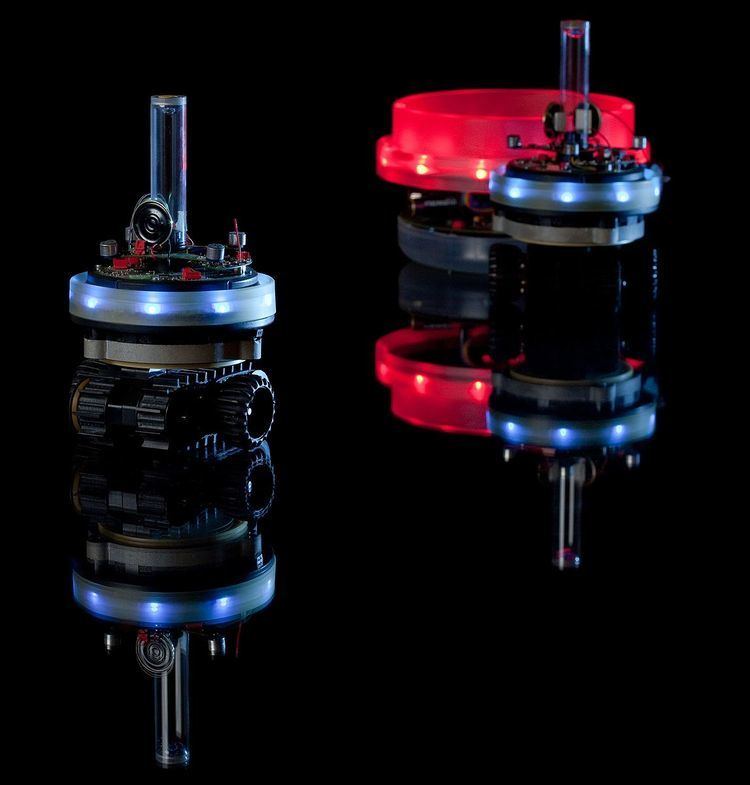Retail availability between 2001 and 2004 | ||
 | ||
Developer LIS (Laboratory of Intelligent Systems) | ||
The s-bot is a small (15 cm) differential wheeled (with additional tracks) mobile robot developed at the LIS (Laboratory of Intelligent Systems) at the EPFL in Lausanne, Switzerland between 2001 and 2004. Targeted to swarm robotics, a field of artificial intelligence, it was developed within the Swarm-bots project, a Future and Emerging Technologies project coordinated by Prof. Marco Dorigo. Built by a small team of engineers (Francesco Mondada, André Guignard, Michael Bonani and Stéphane Magnenat) of the group of Prof. Dario Floreano and with the help of student projects, it is considered at the time of completion as one of the most complex and featured robots ever for its size. The s-bot was ranked on position 39 in the list of “The 50 Best Robots Ever” (fiction or real) by the Wired magazine in 2006.
Contents
Purpose and use of the s-bot
This is a research robot, aimed at studying teamwork and inter-robot communication. To do this, the s-bots have several special abilities:
Of course, all other sensors and actuators, also found on other robots, can be used to do teamwork such as food foraging.
General
Control
Actuators
Sensors
LEDS
Special abilities
S-bots can connect to other s-bots to create a bigger structure known as the swarm-bot. To do so, they attach together using their rigid gripper and ring. An s-bot has sufficient force to lift another one.
Integrated software
The s-bot features a custom Linux port running the Familiar GNU/Linux distribution. All sensors and actuators are easily accessible through a simple C API.
